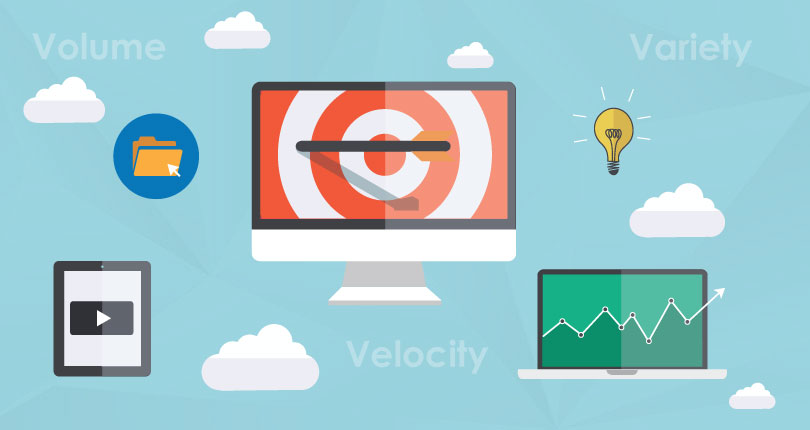Discussions surrounding big data often mention its three Vs: volume, variety, and velocity. The most commonly discussed of those three is obviously volume, which isn’t surprising given the name big data. However, variety and velocity are just as important in the equation.
In fact, velocity is too often overlooked. Companies are so focused on gaining as much data as possible from many different sources, they forget about the analytical element. Our world moves at a remarkable speed, which means what might be relevant today could be stale tomorrow. This is why real-time analytics is such a powerful tool. The faster companies decipher the information, the faster they’ll find actionable results and outsmart the competition.
Monitoring Metrics, Campaigns, and Consumer Behavior
While most companies wish they could release a perfect campaign without hiccups from start to finish, it doesn’t ever work that way. It’s impossible to fully predict how people will react to messaging or tactics. Fortunately, real-time analytical tools can help organizations quickly monitor metrics, audience sentiment, and campaign strength like never before.
There are many social platforms, from Facebook to Twitter, that provide insights into how people interact with brands and respond to their initiatives. Let’s say you’re working for an online retailer. You’ve just started a social marketing campaign to help promote a new line of products. How is your target audience responding? Using the right tools you can gauge sentiment and see if people are having positive or negative conversations about your product. This is incredibly useful, as it allows marketers to make changes on the fly, instead of waiting for the numbers and impressions to come out at the end of a campaign.
Or what if you’re a mobile game developer? Real-time analytical tools will allow you to see how users are behaving when they first use your game. Do they exit right away? What aspects of the game are they using most often? All of this information could help you tweak in-game features and make improvements much quicker, avoiding frustrated players and lost customers. Lastly, mobile apps are a great means of collecting information about the actual users. There’s nothing stopping researchers from creating games designed to test observational skills or cognitive abilities. Mobile-based games can offer researchers an exciting new means of gathering inexpensive big data, which would normally take years to collect in a lab.
Split Testing
For those unfamiliar with split testing, it refers to running a simultaneous experiment between multiple variants to see which performs the best. For web designers, this could be which page layout do people interact better with, or which banner ad has the best click-through rate. Analysts can use this process to test and optimize their products in minutes. This could be very useful for mobile developers looking to monetize their games. In-app purchases are a common source of revenue, so developers could test a number of different purchase buttons or links to see which are the most effective at driving conversion.
This isn’t just for game developers; it could be just as useful for online retailers. Researchers could apply the same process to see which page layouts are most useful for their customers. Do people respond better to more search results on a page? Will removing a sidebar and replacing it with recommended items lead to more sales? These are all important questions that split tests can quickly answer, leading to faster turnaround times and getting the right results sooner.
Targeted Content Based on User Preferences
Real-time analytics don’t just help create algorithms that sell dish towels and toy cars. They’re also a powerful tool in improving targeted marketing. For online retailers, that means getting the right products in front of the people looking for them or offering the right promotions to the people most likely to buy. For gamers, that means understanding which types of individuals are playing which game, and crafting an individualized approach to reach them. For example, Microsoft could see who has bought a new game with online capabilities, then offer them an online Xbox subscription right away.
Real-time analytics can have a powerful impact on marketing from targeting content to sentiment analysis with the right technology in place. Big data in the cloud puts business intelligence first and technology second. With the power of a Hadoop cluster as a fully managed service, Hadoop as a Service makes using big data for real-time marketing easy. Learn more about Hadoop in the cloud.





